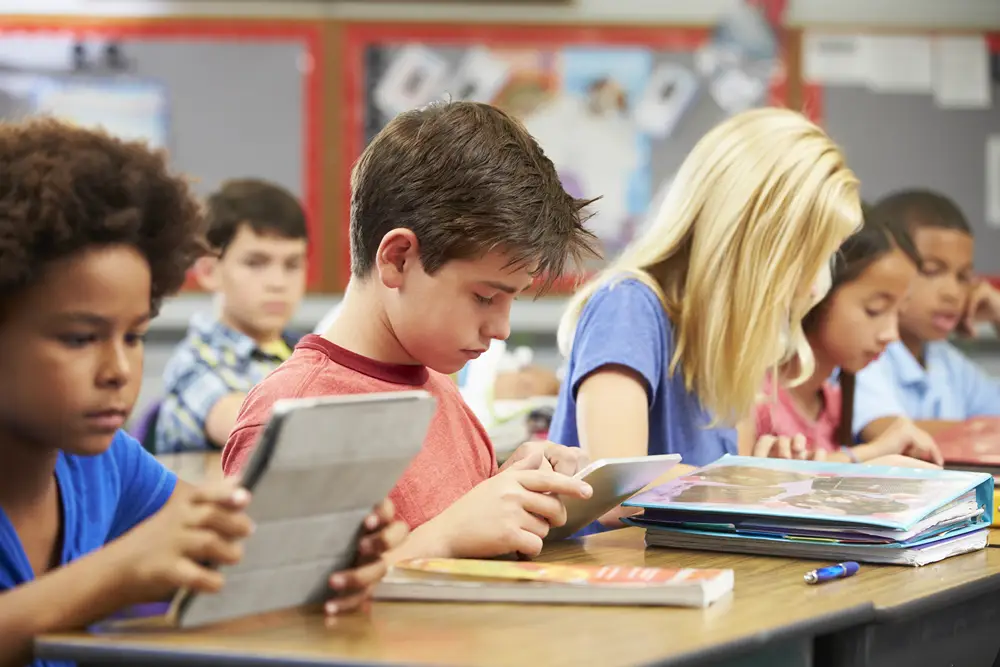5 Online Class Productivity Tips for Teachers
Online classes have many advantages beyond just decreasing the impact school closures: they can be more engaging, provide more opportunities for personalized learning, and save on commuting time. No wonder, then, that the future of online education remains positive—even as kids return to school.
While many teachers have embraced online learning, others have found the transition to be challenging. But with just a little bit of effort, you can make the switch successfully.
Here are five tips to help you boost your productivity and ensure the consistent growth of your students while learning online.
Set Out Your Plans Early
The first step to being productive as an online educator is simple: you need to set out your plans early. By outlining what you want to achieve in each class, you’ll have a better sense of what actions you must take and when you need to take them. This will help you stay on track while teaching and avoid getting sidetracked.
Don’t try to accomplish too much in a single class—you’ll only end up frustrated and overwhelmed. Instead, break down your goals into smaller, more manageable tasks that you can complete.
Get Organized
This won’t be news to older teachers, but it bears repeating. Most teachers are indeed quite organized, but even the most fastidious teachers can get overwhelmed once classes start piling up.
There are no hard rules when it comes to getting organized. We generally suggest just doing what works best for you and your students. Some ideas to consider:
- Creating a master list of all the topics you want to cover in your course
- Divvying up your master list into smaller units or modules
- Making a schedule for each unit, including deadlines for when each topic should be covered
- Assigning readings, videos, and other materials for each class session
- Filling out answer keys for faster grading
Preparing everything you need ahead of time means one less thing to worry about during class. It also gives you a sense of control and mastery over the material, which can boost your confidence in front of your students.
Split Your Tasks
Teachers are constantly pulled one way and then another. There are a million things that need to be done and not enough hours in the day to do them all. The key to productivity, especially online, is splitting your tasks up so that you can focus on one thing at a time.
You can break them down in any number of ways. Our two favorites:
- High- and low-involvement- Some teachers like to split their tasks between those that are high-involvement, such as lesson planning, and those that are low-involvement, like photocopying. This allows you to tackle the difficult work when you feel most energetic and save the simpler tasks for when you need a break.
- Urgent and not so urgent– Another way to split your tasks is by urgency. This can help you prioritize what needs to be done first and prevent you from getting bogged down in the less important work.
Whichever way you choose, the important thing is that you find a way to focus on one task at a time so that you can give it your full attention.
Harness Technology
To be as productive as possible, make sure you make the most of the technology tools available to you. Doing this not only makes your life easier, but it also makes your students’ learning experience better.
Again, feel free to go with whatever tools work best for you and your students, but here are a few ideas to get you started:
- Screen capture– Use this tool to take pictures of what’s on your screen. This is great for when you want to save a website, document, or image for later reference. You can also use it to show a student’s screen to the rest of the class.
- Smart class management system– These systems help you manage your classroom by keeping track of assignments, grades, and student progress. They can also be used to create and deliver assignments, such as GitHub for Education.
- Assisting tools– There are many tools available that can help you with things like taking attendance, monitoring student activity, and providing feedback.
It’s unlikely that your students will need much help using these tools, but it’s always a good idea to go over them at the beginning of the semester just in case. By familiarizing yourself with the technology available to you and taking advantage of the features that can make your life easier, you can help ensure a productive and successful semester.
Take an Individual Approach
Many parents and students are concerned that, with remote learning fast becoming the norm, teachers won’t have enough time to give each student the individual attention they need to succeed. But there are always ways that teachers can continue to have individual two-way communication with their students, even when teaching online.
Checking in for some one-on-one time virtually is a great way to ensure that your students are keeping up with their work, and to answer any questions or quell any concerns they may have. You can also set up chat rooms for students to communicate with one another or to ask you questions outside of class time—particularly helpful for shy students.
Getting to know each one of your students helps you gain an understanding of their individual needs and helps you cater to them in the best way possible. If one student, for example, seems to be interested in coding, you can point them to one of the many kid-friendly coding web resources available online.
Boosting your productivity as a teacher helps you make the most of your time, which in turn allows you to give your students the attention they need to thrive. Following the tips we outlined above will help you create a productive routine that works for you and your students.
Why Productivity Matters Beyond Efficiency
Companies like Adobe have taken a dive into teacher efficiency and has uncovered a startling truth about saving money while saving the world. Teachers and the school system could be greatly reducing costs with the adoption of eco-friendly practices, such as digital documents.
Here are a few stats to consider:
- The American US Education system uses 41.6 billion sheets of paper each year— equivalent to 4.16 million trees’ worth of paper every year— and spends $2.1 billion a year in printing paper alone.
- With digital documents, the average K-12 school can save $120,000 a year— an average savings of $13.50 per piece of paper replaced.
- For every 1,000 students that go paperless, a school saves 533 pounds of wood, 84 pounds of waste, and 1287 pounds of carbon dioxide.
So, here’s to better productivty for your classroom and school while shaping the minds of tomorrow to be the best they can be.




